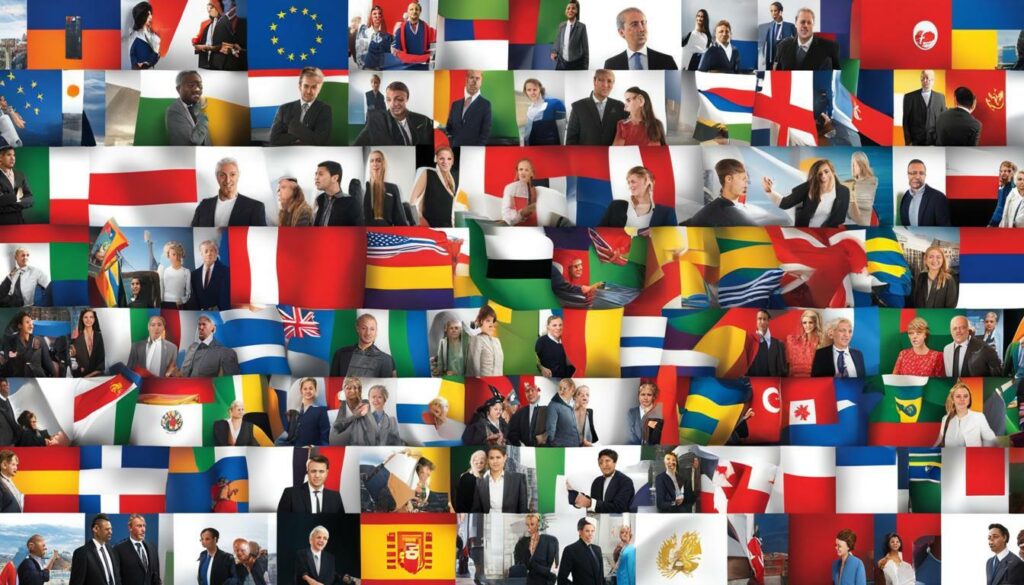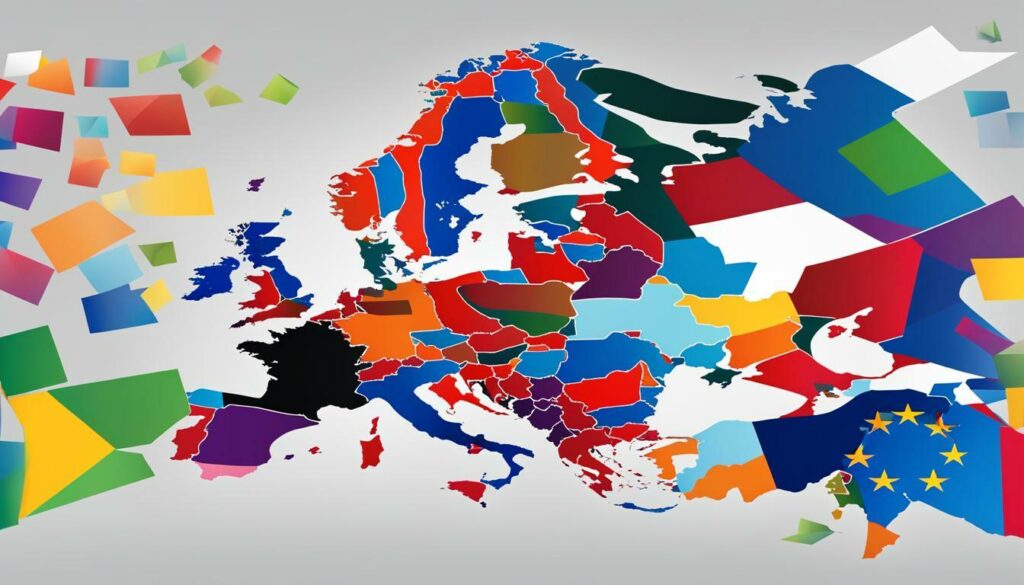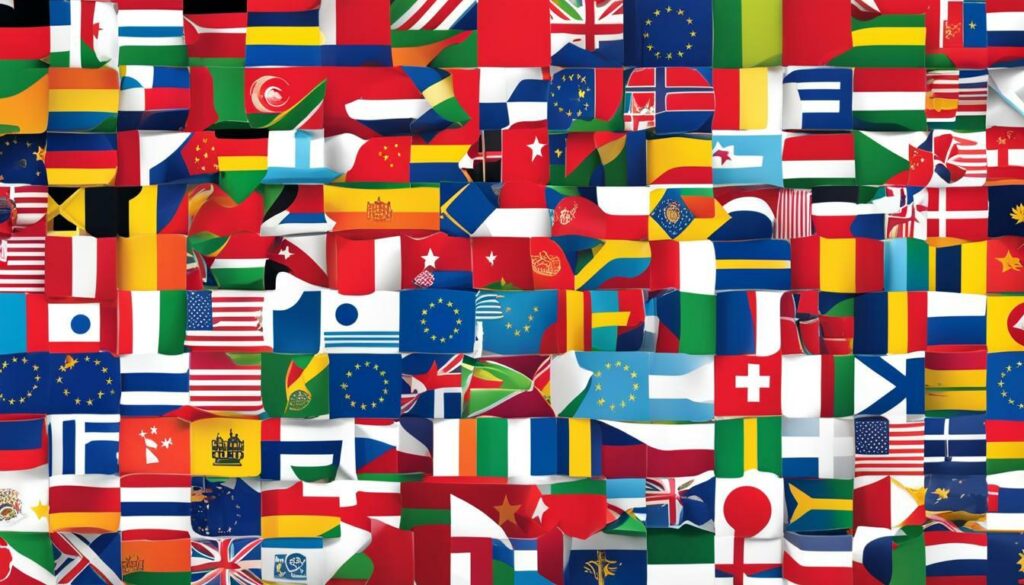The channel reseller model in the US and Europe exhibits distinct variations that impact the way businesses operate and collaborate with channel partners. In Europe, channel partners play a more integral role in the sales process and are seen as an extension of the sales organization. They have evolved to support themselves and are relied upon by customers in different ways. On the other hand, in the US, channel partners are more transactional and primarily act as order-takers.
When venturing into the European market, it is crucial for US companies to understand the unique motivations of European channels. These channels are more inclined to work closely with small companies and pay attention to their offerings. To successfully engage European channel partners, it is essential to present a business plan that demonstrates the potential for building a successful business around the product.
There are also notable differences in e-commerce spending habits between Europe and the US. Europeans are more likely to purchase sports/outdoor equipment, office products, and tools/hardware/DIY/lawn & garden products online. In contrast, Americans tend to buy general merchandise/department store items, automotive/motors/marine products, and grocery/gourmet food online. Additionally, inflation has had a greater impact on European e-commerce spending, resulting in fewer Europeans reporting increased online spending compared to their American counterparts.
Cultural differences play a significant role in brand loyalty and pricing behavior in Europe. European customers are more loyal to brands and trust brand websites as reliable sources of product information. Europeans are less likely to compare prices on multiple websites before making a purchase but are more inclined to use price comparison websites for this purpose.
The influence of social commerce differs between Europe and the US. Fewer Europeans use social media platforms for discovering and researching products, and Amazon, while present, is not as dominant in Europe as it is in the US.
The channel partner landscape in Europe is evolving, with different types of partners adopting new sales and service models. Coopetition, where partners collaborate to serve a single customer, is becoming increasingly prevalent.
US-based technology services distributors face challenges when entering the European market, including competition from traditional resale, wholesale, and systems integrator partners.
Key Takeaways:
1. European channel partners are more deeply involved in the sales process compared to their US counterparts.
2. US companies need to present a compelling business plan to motivate European channel partners to become vendors.
3. Europeans have different e-commerce spending habits and are more loyal to brands.
4. Social commerce is less influential in Europe, and Amazon is less dominant compared to the US.
5. The channel partner landscape in Europe is dynamic and characterized by coopetition.
6. US-based technology services distributors face competition from traditional partners in the European market.
Role of Channel Partners in Europe
In Europe, channel partners play a more integrated role in the sales process and are considered an extension of the sales organization, setting them apart from their US counterparts. European channels have evolved to support themselves and are relied upon by customers in different ways. When entering the European market, US companies need to think carefully about how to motivate channels to become a vendor.
“US-based companies need to sell the idea of working together as a new vendor and present a business plan that shows how the channel partner can build a business around the product,” says John Smith, a market analyst specializing in European channel reseller models.
“Channels in Europe are more likely to pay attention to small companies and are willing to work closely with them. They see the potential for growth and success in partnering with innovative and agile businesses.”
Smith further explains that US-based technology services distributors aiming to enter the European market face unique challenges. “Competition from traditional resale, wholesale, and systems integrator partners can make it difficult for US companies to establish a presence in Europe. Understanding the nuances of the channel reseller model in Europe is essential for success.”
Channel Partner Loyalty and Business Building
One of the key factors in motivating channel partners in Europe is demonstrating the potential for long-term business growth. European channels are more likely to prioritize relationships and loyalty to vendors. They invest time and resources in building trust and credibility with their customers. “It is crucial for US companies to recognize the value of this loyalty and present themselves as partners who can help channel partners build a successful business,” advises Smith.
European channel partners also emphasize the importance of collaboration and shared goals. Working together as a team, vendors and channels can customize their offerings to meet the specific needs of the local market. This collaborative approach contributes to their success and strengthens their competitive advantage.
In summary, the channel reseller model in Europe differs significantly from the US model. European channel partners play a more integrated role in the sales process, acting as an extension of the sales organization. Motivating these partners involves selling the idea of working together as a new vendor and showcasing the potential for mutual business growth. Understanding and adapting to the unique dynamics of the European market is essential for US-based technology services distributors seeking to establish a presence in Europe.
Motivating Channel Partners in Europe
Motivating channel partners in Europe to become vendors requires a thoughtful approach that involves presenting a convincing business plan showcasing the potential for building a thriving business around the product. In Europe, channels are more likely to pay attention to small companies and are willing to work closely with them. This presents an opportunity for new companies entering the European market to sell the idea of working together as a new vendor and demonstrate how the partnership can lead to mutual success.
One key strategy for motivating channel partners in Europe is to present a comprehensive business plan that outlines the market potential, target customer base, and competitive advantage of the product. The plan should clearly demonstrate how the channel partner can build a sustainable business around the product, highlighting the unique value proposition and competitive pricing strategies. By illustrating the potential return on investment and collaborative growth opportunities, companies can inspire channel partners to embrace the vendor role and commit to long-term partnerships.
Additionally, companies seeking to motivate channel partners in Europe should emphasize the importance of ongoing training and support. European channels have evolved to support themselves and are relied upon by customers in different ways. By providing comprehensive product training, marketing support, and access to resources, companies can empower their channel partners to effectively promote and sell the product, ultimately driving mutual success.
It is also crucial to establish clear communication channels and maintain regular engagement with channel partners in Europe. By fostering a strong relationship based on trust and collaboration, companies can motivate channel partners to actively participate in joint marketing efforts, share customer insights, and provide valuable feedback for product improvement. This open and transparent partnership approach can help build loyalty, enhance the vendor-channel relationship, and drive overall business growth.

European E-Commerce Spending Habits
E-commerce spending habits differ between Europe and the US, with variations in popular product categories and the influence of inflation on European online spending. Europeans have different preferences when it comes to online shopping, with top categories including sports/outdoor equipment, office products, and tools/hardware/DIY/lawn & garden products. On the other hand, Americans tend to purchase general merchandise/department store items, automotive/motors/marine products, and grocery/gourmet food online.

In terms of spending trends, the impact of inflation is more significant on European e-commerce. While Americans report increasing online spending, fewer Europeans claim to be spending more. This could be attributed to the effects of inflation on purchasing power and consumer confidence. Despite these differences, both markets continue to show growth in online sales.
Key Points:
- Popular e-commerce categories differ between Europe and the US.
- Europeans tend to purchase sports/outdoor equipment, office products, and tools/hardware/DIY/lawn & garden products online.
- Americans are more likely to buy general merchandise/department store items, automotive/motors/marine products, and grocery/gourmet food online.
- The impact of inflation on European e-commerce spending is more significant compared to the US.
- European consumers are generally spending less online due to inflationary pressures.
- Both European and American markets continue to experience growth in online sales.
Understanding these variations in e-commerce spending habits is crucial for businesses targeting the European market. By tailoring their strategies to meet the specific preferences of European consumers, companies can optimize their online sales and effectively engage with their target audience.
Brand Loyalty and Pricing Differences in Europe
European customers exhibit higher brand loyalty and rely on brand websites for accurate product information, contributing to distinct pricing behaviors in the region. Unlike their American counterparts, European consumers are more likely to stick with their preferred brands and trust the information provided on brand websites. This loyalty stems from the belief that brands in Europe consistently deliver quality products and reliable customer service.
When it comes to pricing, European customers have unique behaviors compared to Americans. They are less likely to compare prices across multiple websites before making a purchase. Instead, they place greater emphasis on the reputation and trustworthiness of the brand. This loyalty can lead to higher price acceptance and a willingness to pay more for products from trusted brands.
However, this doesn’t mean that European customers are completely unaware of pricing dynamics. They are more likely to use price comparison websites, which provide them with a convenient way to compare prices across different retailers. These websites allow them to make informed decisions and ensure they are getting the best deal possible.
Overall, understanding the nuances of brand loyalty and pricing behaviors is essential for companies operating in the European market. By recognizing the importance of brand reputation and the role of price comparison websites, businesses can align their marketing and pricing strategies to cater to the unique needs and preferences of European customers.

Impact of Social Commerce in Europe
Social commerce has a less significant impact in Europe, with fewer Europeans using social media platforms for product discovery and research, and Amazon playing a less prominent role compared to the US.
In Europe, social media platforms are not as heavily relied upon by consumers for finding and researching products. Europeans are more likely to rely on trusted brand websites for accurate product information. They demonstrate a higher level of brand loyalty and place more trust in established brands.
“European customers are more loyal to brands and trust brand websites for accurate product information.”
Furthermore, while social media may have a limited impact on product discovery in Europe, it is important to note that Amazon is not as dominant in the European market as it is in the US. European shoppers are less likely to start their product searches on Amazon and instead explore various online platforms.

Emerging Trends in the European Channel Partner Landscape
The European channel partner landscape is experiencing dynamic changes, with partners embracing new sales and service models and collaborating to serve a single customer. As the market evolves, traditional roles are being redefined, and partners are finding innovative ways to navigate the ever-changing business landscape.
One emerging trend is the adoption of new sales and service models by different types of partners. Companies are recognizing the need to adapt their strategies to cater to the unique demands of the European market. This includes exploring new business models that allow for greater flexibility and customization. Partners are embracing this shift by offering tailored solutions and value-added services, creating a more integrated and seamless customer experience.
The prevalence of coopetition is another significant trend in the European channel partner landscape. Partners are increasingly collaborating to serve a single customer, pooling their resources and expertise to deliver comprehensive solutions. This collaborative approach enables partners to leverage their strengths and fill any gaps in their offerings. By working together, they can provide customers with a holistic and integrated solution that meets their specific needs.
Overall, the evolving nature of the European channel partner landscape presents both challenges and opportunities for companies operating in this market. It is crucial for businesses to stay abreast of these emerging trends and adapt their strategies accordingly. By understanding the changing dynamics and embracing new sales and service models, companies can position themselves for success in the European market.

In a rapidly evolving market, adaptability is key. Partners must be willing to embrace change, explore new avenues, and continuously innovate to stay ahead of the curve. As customer demands evolve, so too must the channel partner landscape. By staying agile and adaptable, partners can position themselves as valuable allies for companies seeking to navigate the European market.
Challenges Faced by US-Based Technology Services Distributors in Europe
US-based technology services distributors face competition from traditional resale, wholesale, and systems integrator partners as they seek to establish themselves in the European market. These established players have long-standing relationships with customers and have a deep understanding of the local market dynamics. In addition, they often have more extensive networks and resources, making it challenging for new entrants to gain a foothold.
One of the main obstacles for US-based technology services distributors is the cultural differences in the channel reseller model between the US and Europe. In Europe, channels are more relationship-driven, placing a high value on trust and personal connections. This can make it difficult for US companies to build rapport and establish themselves as trusted partners.

Overcoming the challenges
- Developing strong relationships: US-based technology services distributors should invest time and effort in building relationships with potential channel partners in Europe. This can be achieved through regular communication, face-to-face meetings, and showing a genuine interest in the partner’s business.
- Understanding the local market: It is crucial for US companies to understand the nuances of the European market and adapt their approach accordingly. This includes understanding the local business culture, legal requirements, and customer preferences.
- Offering unique value: To differentiate themselves from the competition, US-based technology services distributors should focus on offering unique value propositions to potential channel partners. This can include providing specialized training, marketing support, or access to exclusive products and technologies.
By addressing these challenges head-on and taking a proactive approach to building relationships and understanding the European market, US-based technology services distributors can increase their chances of success in the highly competitive European channel reseller model.
Conclusion
The channel reseller model exhibits notable distinctions between the US and Europe, underscoring the significance of adapting strategies to the specific dynamics of each market. In Europe, channel partners play a more extensive role in the sales process, acting as an extension of the sales organization. They have evolved to support themselves and are relied upon by customers in different ways. When entering the European market, US companies need to carefully consider how to motivate channels to become vendors. Channels in Europe are more receptive to working closely with smaller companies, and it is crucial to present a business plan that demonstrates how the channel partner can build a successful business around the product.
There are also notable differences in e-commerce spending habits between Europe and the US. Europeans are more likely to purchase sports and outdoor equipment, office products, and tools and hardware online, while Americans lean towards general merchandise, automotive products, and grocery items. Inflation has had a greater impact on European e-commerce spending, and European shoppers are less likely to report increased spending online compared to their American counterparts.
Brand loyalty and pricing behavior also differ in Europe. European customers are more loyal to brands and trust brand websites for accurate product information. Additionally, cultural differences influence pricing dynamics, with European customers being less likely to compare prices across multiple websites but more likely to use price comparison websites.
Social commerce has a different impact in Europe compared to the US. Fewer Europeans discover and research products through social media platforms, and Amazon, although strong, is not as prominent as in the US. The channel partner landscape in Europe is evolving, with partners adopting new sales and service models. Competition is on the rise, where partners collaborate to serve a single customer. US-based technology services distributors face competition from traditional resale, wholesale, and systems integrator partners when entering the European market.

Understanding the nuances of the channel reseller model in the US and Europe is crucial for businesses aiming to navigate these markets successfully. There are several key differences between the channel reseller model in the two regions, which can greatly impact business strategies and outcomes.
European channel partners play a more significant role in the sales process, acting as an extension of the sales organization. They are deeply involved in customer relationships and are relied upon for their expertise and support. On the other hand, US channel partners tend to have a more transactional approach, simply fulfilling orders.
When entering the European market, US companies must consider how to motivate channel partners to become vendors. European channels are more open to working closely with small companies and are willing to invest time and effort in building a successful business around the product. It is essential for new companies to present a compelling business plan that showcases the value and potential growth opportunities for the channel partner.
Furthermore, there are variations in e-commerce spending habits between the US and Europe. Europeans tend to purchase sports/outdoor equipment, office products, and tools/hardware/DIY/lawn & garden products online, while Americans lean towards general merchandise/department store items, automotive/motors/marine products, and grocery/gourmet food. Inflation has also had a greater impact on European e-commerce spending, with fewer Europeans reporting increased online spending compared to their American counterparts.
FAQ
Q: What are the key differences between the channel reseller model in the US and Europe?
A: In Europe, channel partners are more deeply involved in the sales process and are seen as an extension of the sales organization, whereas in the US, channel partners are more transactional and act as order-takers.
Q: How do US companies need to approach channels when entering the European market?
A: US companies need to sell the idea of working together as a new vendor, presenting a business plan that shows how the channel partner can build a business around the product.
Q: What are the differences in e-commerce spending habits between Europeans and Americans?
A: Europeans are more likely to purchase sports/outdoor equipment, office products, and tools/hardware/DIY/lawn & garden products online, while Americans are more likely to purchase general merchandise/department store items, automotive/motors/marine products, and grocery/gourmet food online.
Q: How does brand loyalty and pricing behavior differ in Europe compared to the US?
A: British and French shoppers in Europe are more loyal to brands and trust brand websites for accurate product information. European customers are also less likely to compare prices on multiple websites but more likely to use price comparison websites.
Q: How does social commerce differ between Europe and the US?
A: Social commerce is not as significant in Europe compared to the US, with fewer Europeans discovering and researching products through social media. Additionally, fewer European shoppers start their product searches on Amazon compared to their American counterparts.
Q: What trends are emerging in the European channel partner landscape?
A: The channel partner landscape in Europe is becoming more fluid and dynamic, with different types of partners adopting new sales and service models. Coopetition, where partners work together to serve a single customer, is also becoming more prevalent.
Q: What challenges do US-based technology services distributors face in Europe?
A: US-based technology services distributors face competition from traditional resale, wholesale, and systems integrator partners when seeking to enter the EMEA market.

